TBI BLOGS: 7 Wildlife Creatures Illegally Traded in India. And How We Can Save Them.
Wildlife trade and trafficking have decimated wild species across the globe in recent years. Here is a list of lesser known species that are a part of the illegal wildlife trade in India. You can help save them.

March 3 is celebrated as World Wildlife Day, marking the signing of the Convention on International Trade in Endangered Species of Wild Fauna and Flora (CITES), a ground-breaking international treaty to protect species from wildlife trafficking. Wildlife trade and trafficking have decimated wild species across the globe in recent years. Here is a list of lesser known species that are a part of the illegal wildlife trade in India. You can help save them.
Wildlife trade and trafficking have decimated wild species across the globe in recent years. Illegal wildlife trade is the fourth largest organized crime in the world, after arms trafficking, human trafficking and drug trafficking. India has some of the strictest laws to protect wildlife through the Wildlife Protection Act, 1972 , Indian Penal Code and The Prevention of Cruelty to Animals Act, 1960.
Despite these strict legal provisions, trade in wildlife continues unabated in India, particularly with lesser known species, owing to the lack of public awareness. Here, we put together a list of lesser known species that are part of the illegal wildlife trade in India, in the hopes that people can notify authorities if they suspect they’re being trafficked.
1. Indian Pangolin (Manis crassicaudata) and Chinese Pangolin (Manis pentadactyla)
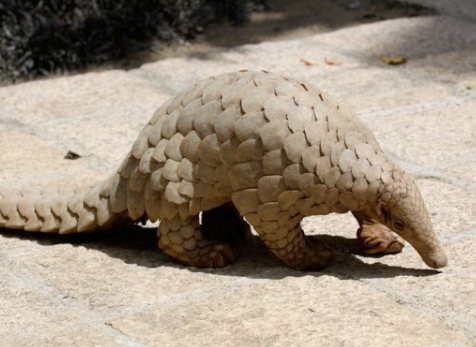
Source: Wikimedia Commons
What use could the world’s only ‘scaly mammal’ be to human beings? The pangolin, whose body is covered in scales made of keratin, is found in Asia and Africa and is poached for consumption in South East Asian countries. The flesh, especially of foetuses, is considered a delicacy. Despite any scientific proof medicinal properties, their scales, blood and other parts are used in traditional Chinese medicine. Pangolins, being insectivorous, are part of nature’s very system of efficient pest control. Their long claws are used to dig through earth and bark and help aerate the soil, thus improving its quality. Both the Indian Pangolin and the Chinese Pangolin are protected under Schedule I of the Wildlife (Protection) Act, 1972.
Tokay Gecko (Gecko gecko)
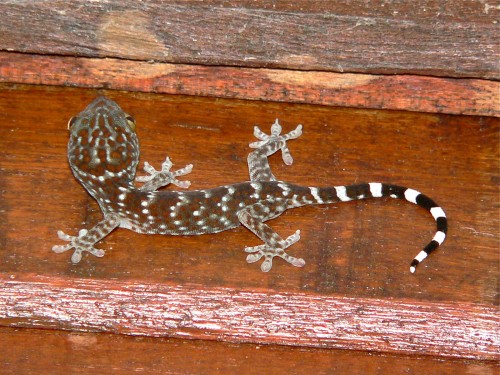
Source: Wikimedia Commons
The ringing call of the Tokay Gecko is slowly fading across the forests of North East India. As per this TRAFFIC Report, the world’s second largest gecko is traded in legal and illegal networks for use in traditional Chinese medicine as well as tokay wine or whisky, under the mistaken notion that it serves as a cure for ailments such as diabetes, skin diseases and even AIDS. Tokay geckos are also coveted as pets. The trade is very lucrative, and poachers in North East India have turned their attention to this reptile. Tokay Geckos feed on insects and larva and thus control the populations of pests in the ecosystem. They are enlisted under Schedule IV of the WPA, 1972.
Star Tortoises (Geocheloneelegans)
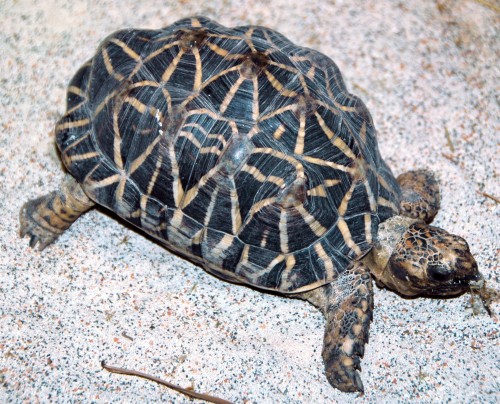
Source: Wikimedia Commons
The Indian Star Tortoise’s beautifully patterned shell that nature intended as a camouflage has become the poor reptile’s burden. Coveted for the radiating pattern on their shells in the illegal pet trade across the world, Nature Conservation reports that star tortoises are among the most frequently, albeit illegally, traded wildlife species, with more than 55,000 individuals being smuggled from one “trade hub” in India in just one year. The star tortoise is also found in temples and households in India, owing to the belief they represent the Hindu god Vishnu, and is thus considered to be lucky. Star tortoises are found in scrublands and grasslands across the subcontinent, from where they are poached and clandestinely shipped to other countries. This terrestrial reptile carries out the crucial task of seed dispersal, thus occupying an important ecological niche in the ecosystem. They are protected under Schedule IV of the WPA, 1972
Hill Mynah (Gracula religiosa)
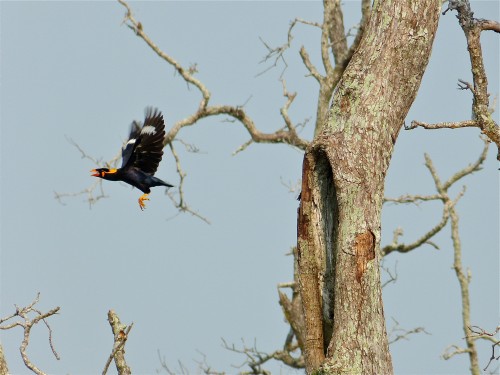
Source: Wikimedia Commons
In the Western Ghats, as well as in parts of Eastern and North Eastern India, forest clearings ring loud with a cacophony of raucous shrill whistles and squawks, courtesy the stocky, belligerent hill mynah. The sounds and shrieks that make these birds so conspicuous have also resulted in them being captured extensively for sale in the illegal pet trade. These birds are prized for their ability to mimic a variety of sounds, including human speech. As per Indian law, the Hill Mynah is categorised under Schedule I of the WPA. The Hill Mynah feeds on fruits, berries, seeds, and insects, thus playing an important role in pollination and seed dispersal.
Owls

Source: Wikimedia Commons
Owls are renowned for their intelligence and stealth but that isn’t enough to save them from the sinister web of the illegal wildlife trade. Their association with Lakshmi, the Hindu goddess of wealth, has led to their use in sacrifices and black magic rituals by tantriks and sorcerers who lead people to believe that the ownership and use of owl feathers, bones, meat, tufts, and organs brings wealth. This TRAFFIC report states that of the 30 species found in India, 15 are commonly traded; they are also caught by poachers who use them as decoys to trap other birds. Owls are invaluable to farmers owing to their role as eradicators of crop pests. Owls are protected under Schedule IV of the WPA, except for the Forest Owlet which is categorised under Schedule I.
Red Sand Boa (Eryx johnii)
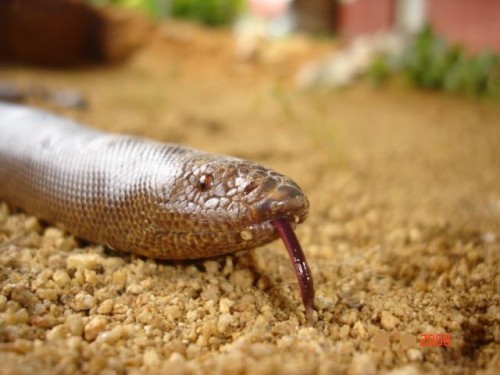
Source: Humane Society International
If they could talk, snakes in India would shout themselves hoarse trying to dispel the widely perpetuated yet false myths that plague the species. One among these is the existence of the two-headed snake. This snake, which science identifies as the Red Sand Boa, is a non-venomous snake that has a thick tail with a blunt tip. Unscrupulous traders capture these snakes and burn their tails to create markings that resemble eyes and a mouth. As the price of sand boas depends on their weight, poachers often feed them steel ball bearings or liquid mercury just before trade, to increase their weight. They are known to be sold illegally to superstitious customers who believe sand boas have medicinal properties and bestow luck upon the owners. They feed on rats and other small animals, thus keeping a check on the rodent population. They are listed under Schedule IV of the WPA.
Shells
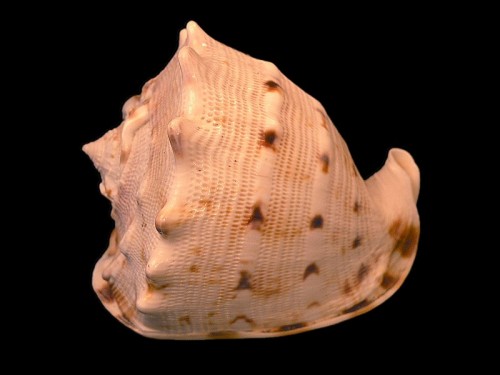
Shells are often prized as decorative items and ornaments with various craftsmen turning shells of various shapes and sizes into ornaments, knick-knacks like pen stands, paper weights, and key chains. The iridescent inner layer called ‘mother of pearl’ is used in jewellery and watches. However, most of these items are made from shells that have been extracted in unsustainable and cruel methods from the deep, which also affects the marine ecosystems. Shells are actually the outer skeletons of marine invertebrates who have a very important ecological role to play. While they act as food for fish and bigger marine organisms, they also recycle plant and animal waste, thus cleaning the ocean and also contributing to reef building. However, due to the illegal trade in shells, various species such as Hippopus Clam (Hippopus hippopus), Horned Helmet (Cassis cornuta), Nautilus Pompilius, and the Scorpion Conch (Lambius scorpius) are threatened. While nine of these are protected under Schedule 1 of the WPA, 15 others fall under Schedule IV.
As a responsible citizen of India, here’s what you should do if you encounter wildlife trade:
- Don’t engage or participate in wildlife trade.
- Don’t buy wildlife or products derived from wildlife animals and sign our Don’t Buy Wild.
- Inform the nearest Forest Department office, police station, law enforcement agency, or wildlife NGO. You can also inform the Wildlife Crime Control Bureau about any wildlife crime via this link or any other mode of communication.
For more information, please visit hsi.org/india.
Like this story? Or have something to share? Write to us: [email protected], or connect with us on Facebook and Twitter (@thebetterindia).
If you found our stories insightful, informative, or even just enjoyable, we invite you to consider making a voluntary payment to support the work we do at The Better India. Your contribution helps us continue producing quality content that educates, inspires, and drives positive change.
Choose one of the payment options below for your contribution-
By paying for the stories you value, you directly contribute to sustaining our efforts focused on making a difference in the world. Together, let’s ensure that impactful stories continue to be told and shared, enriching lives and communities alike.
Thank you for your support. Here are some frequently asked questions you might find helpful to know why you are contributing?


This story made me
-
97
-
121
-
89
-
167













